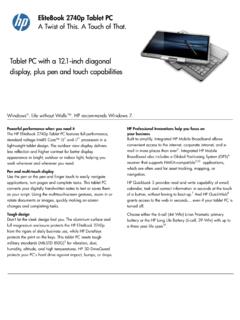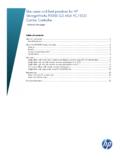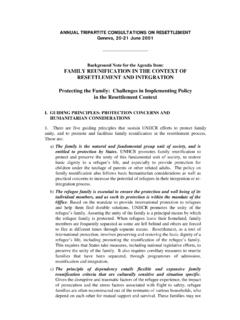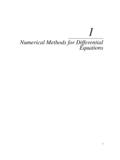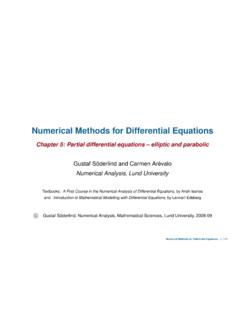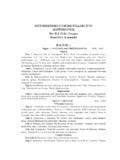Transcription of ADVANCED FUNCTIONS HANDBOOK - hp.com
1 HEWLETT-PACKARD. HP-15C. ADVANCED FUNCTIONS . HANDBOOK . Legal Notice This manual and any examples contained herein are provided as is and are subject to change without notice. Hewlett-Packard Company makes no warranty of any kind with regard to this manual, including, but not limited to, the implied warranties of merchantability non-infringement and fitness for a particular purpose. In this regard, HP shall not be liable for technical or editorial errors or omissions contained in the manual. Hewlett-Packard Company shall not be liable for any errors or incidental or consequential damages in connection with the furnishing, performance, or use of this manual or the examples contained herein. Copyright 1982, 2012 Hewlett-Packard Development Company, LP. Reproduction, adaptation, or translation of this manual is prohibited without prior written permission of Hewlett-Packard Company, except as allowed under the copyright laws.
2 Hewlett-Packard Company Palo Alto, CA. 94304. USA. HEWLETT. PACKARD. HP-15C. ADVANCED FUNCTIONS HANDBOOK August 1982. 00015-90011. Printed in Hewlett-Packard Company 1982. Contents Contents ..4. Introduction ..7. Section 1: Using _ Effectively ..9. Finding Roots ..9. How _ Samples ..9. Handling Troublesome Situations ..11. Easy Versus Hard Equations ..11. Inaccurate Equations ..12. Equations With Several Roots ..12. Using _ With Polynomials ..12. Solving a System of Equations ..16. Finding Local Extremes of a Function ..18. Using the Derivative ..18. Using an Approximate Slope ..20. Using Repeated Estimation ..22. Applications ..24. Annuities and Compound Amounts ..24. Discounted Cash Flow Analysis ..34. Section 2: Working with f .. 40. numerical Integration Using f ..40. Accuracy of the Function to be Integrated ..41. FUNCTIONS Related to Physical Situations.
3 42. Round-Off Error in Internal Calculations ..42. Shortening Calculation Time ..43. Subdividing the Interval of Integration ..43. Transformation of Variables ..47. Evaluating Difficult Integrals ..48. Application ..51. Section 3: Calculating in Complex Mode .. 56. Using Complex Trigonometric Modes ..58. Definitions of Math Arithmetic Operations ..59. Single Valued FUNCTIONS ..59. Multivalued FUNCTIONS ..59. Using _ and f in Complex Mode ..63. Accuracy in Complex Mode ..63. 4. Contents 5. Applications .. 65. Storing and Recalling Complex Numbers Using a Matrix .. 65. Calculating the nth Roots of a Complex Number .. 67. Solving an Equation for Its Complex Roots .. 69. Contour Integrals .. 73. Complex Potentials .. 76. Section 4: Using Matrix Operations ..82. Understanding the LU Decomposition .. 82. ILL-Conditioned Matrices and the Condition Number.
4 84. The Accuracy of numerical Solutions to Linear Systems .. 87. Making Difficult Equations Easier .. 88. Scaling .. 88. Preconditioning .. 91. Least-Squares 93. Normal Equations .. 93. Orthogonal 95. Singular and Nearly Singular Matrices .. 98. Applications .. 100. Constructing an Identity Matrix .. 100. One-Step Residual Correction .. 101. Solving a System of Nonlinear Equations .. 102. Solving a Large System of Complex 108. Least-Squares Using Normal Equations .. 111. Least-Squares Using Successive Rows .. 118. Eigenvalues of a Symmetric Real Matrix .. 125. Eigenvectors of a Symmetric Real Matrix .. 130. Optimization .. 135. Appendix: Accuracy of numerical Calculations ..145. Misconceptions About Errors .. 145. A Hierarchy of Errors .. 150. Level 0: No Error .. 150. Level : Overflow/Underflow .. 150. Level 1: Correctly Rounded, or Nearly So.
5 150. Level 1C: Complex Level 153. Level 2: Correctly Rounded for Possibly Perturbed Input .. 154. Trigonometric FUNCTIONS of Real Radian Angles .. 154. Backward Error Analysis .. 157. Backward Error Analysis Versus Singularities .. 161. Summary to Here .. 162. Backward Error Analysis of Matrix Inversion .. 168. Is Backward Error Analysis a Good Idea? .. 171. Index ..178. 6. Introduction The HP-15C provides several ADVANCED capabilities never before combined so conveniently in a handheld calculator: Finding the roots of equations. Evaluating definite integrals. Calculating with complex numbers. Calculating with matrices. The HP-15C Owner's HANDBOOK gives the basic information about performing these ADVANCED operations. It also includes numerous examples that show how to use these features. The owner's HANDBOOK is your primary reference for information about the ADVANCED FUNCTIONS .
6 This HP-15C ADVANCED FUNCTIONS HANDBOOK continues where the owner's HANDBOOK leaves off. In this HANDBOOK you will find information about how the HP-15C performs the ADVANCED computations and information that explains how to interpret the results that you get. This HANDBOOK also contains numerous programs, or applications. These programs serve two purposes. First, they suggest ways of using the ADVANCED FUNCTIONS , so that you might use these capabilities more effectively in your own applications. Second, the programs cover a wide range of applications they may be useful to you in the form presented in this HANDBOOK . Note: The discussions of most topics in this HANDBOOK presume that you already understand the basic information about using the ADVANCED FUNCTIONS and that you are generally familiar with the subject matter being discussed.
7 7. 8. Section 1: Using _ Effectively The _ algorithm provides an effective method for finding a root of an equation. This section describes the numerical method used by _ and gives practical information about using _ in various situations. Finding Roots In general, no numerical technique can be guaranteed to find a root of every equation that has one. Because a finite number of digits are used, the calculated function may differ from the theoretical function in certain intervals of x, it may not be possible to represent the roots exactly, or it may be impossible to distinguish between zeros and discontinuities of the function being used. Because the function can be sampled at only a finite number of places, it's also possible to conclude falsely that the equation has no roots. Despite these inherent limitations on any numerical method for finding roots, an effective method like that used by _ should strive to meet each of the following objectives: If a real root exists and can be exactly represented by the calculator, it should be returned.
8 Note that the calculated function may underflow (and be set to zero) for some values of x other than the true roots. If a real root exists, but it can't be exactly represented by the calculator, the value returned should differ from the true root only in the last significant digit. If no real root exists, an error message should be displayed. The _ algorithm was designed with these objectives in mind. It is also easy to use and requires little of the calculator's memory. And because _ in a program can detect the situation of not finding a root, your programs can remain entirely automatic regardless of whether _ finds a root. How _ Samples The _ routine uses only five registers of allocatable memory in the HP-15C. The five registers hold three sample values (a, b, and c) and two previous function values (f(a) and f(b)) while your function subroutine calculates f(c).
9 The key to the effectiveness of _ is how the next sample value c is found. Normally, _ uses the secant method to select the next value. This method uses the values of a, b, f(a), and f(b) to predict a value c where f(c) might be close to zero. 9. 10 Section 1: Using _ Effectively If c isn't a root, but f(c) is closer to zero than f(b), then b is relabeled as a, c is relabeled as b, and the prediction process is repeated. Provided the graph of f(x) is smooth and provided the initial values of a and b are close to a simple root, the secant method rapidly converges to a root. However, under certain conditions the secant method doesn't suggest a next value that will bound the search or move the search closer to the root, such as finding a sign change or a smaller function magnitude. In such cases, _ uses a different approach. If the calculated secant is nearly horizontal, _ modifies the secant method to ensure that |c b| 100 |a b|.
10 This is especially important because it also reduces the tendency for the secant method to go astray when rounding error becomes significant near a root. If _ has already found values a and b such that f(a) and f(b) have opposite signs, it modifies the secant method to ensure that c always lies within the interval containing the sign change. This guarantees that the search interval decreases with each iteration, eventually finding a root. 10. Section 1: Using _ Effectively 11. If _ hasn't found a sign change and a sample value c doesn't yield a function value with diminished magnitude, then _ fits a parabola through the function values at a, b, and c. _ finds the value d at which the parabola has its maximum or minimum, relabels d as a, and then continues the search using the secant method. _ abandons the search for a root only when three successive parabolic fits yield no decrease in the function magnitude or when d = b.
